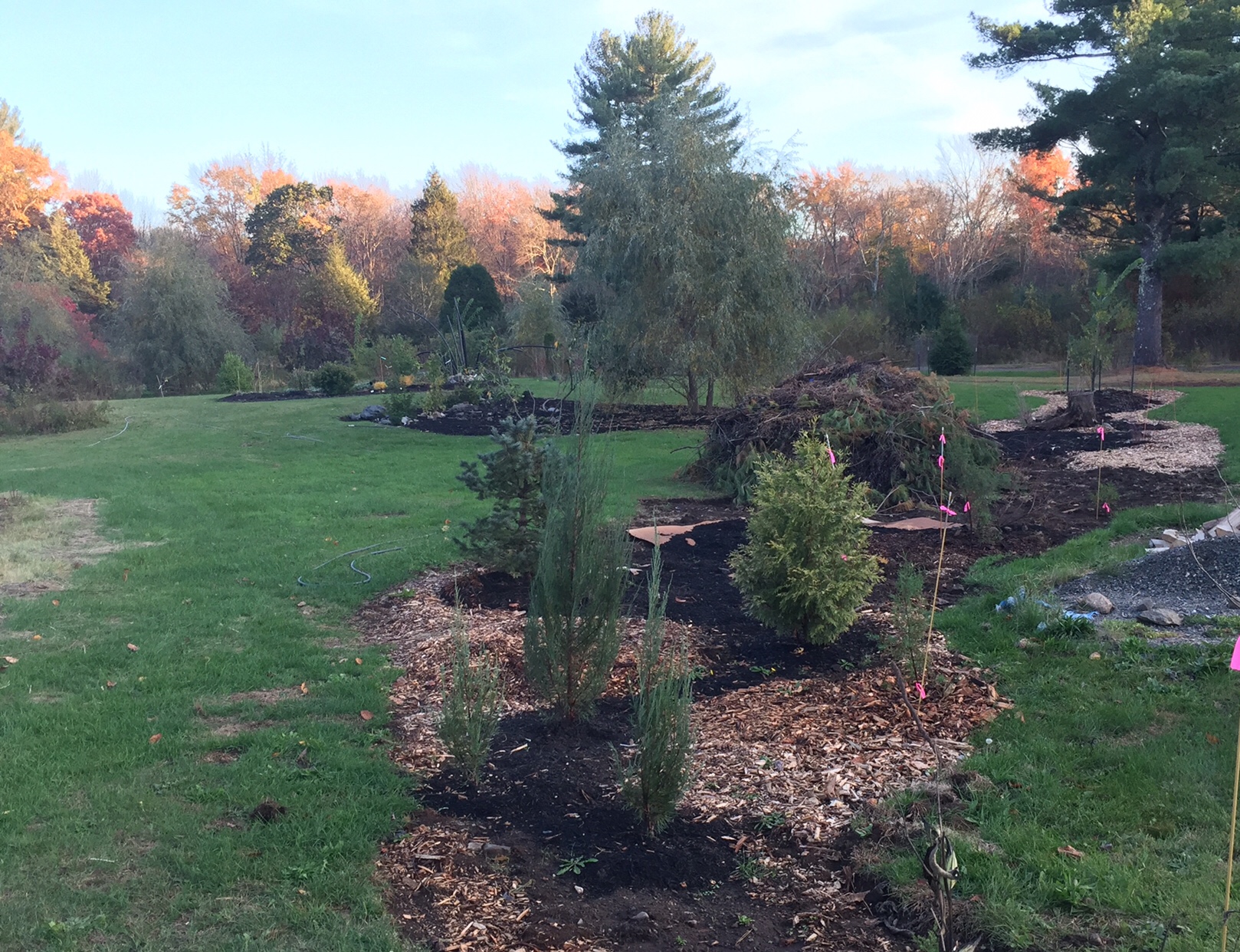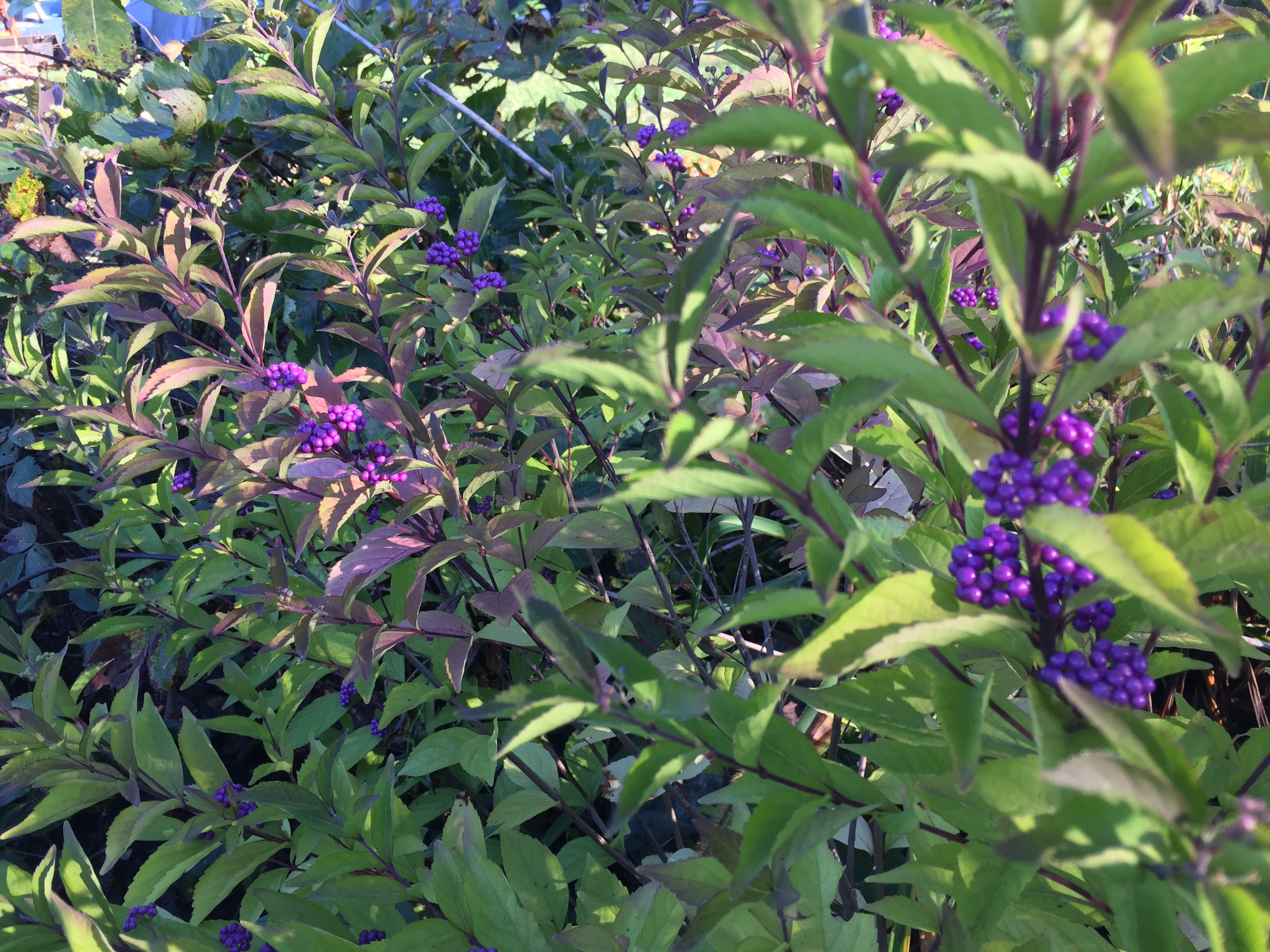
Category: 2017
Caught Unaware
Out pruning one day, I turned around, and here was this giant wasp nest, about three times as big around as my head! Evidently, it had been concealed in this willow shrub. Fortunately, it’s no longer inhabited…but think I’ll wait to prune this shrub, just the same.
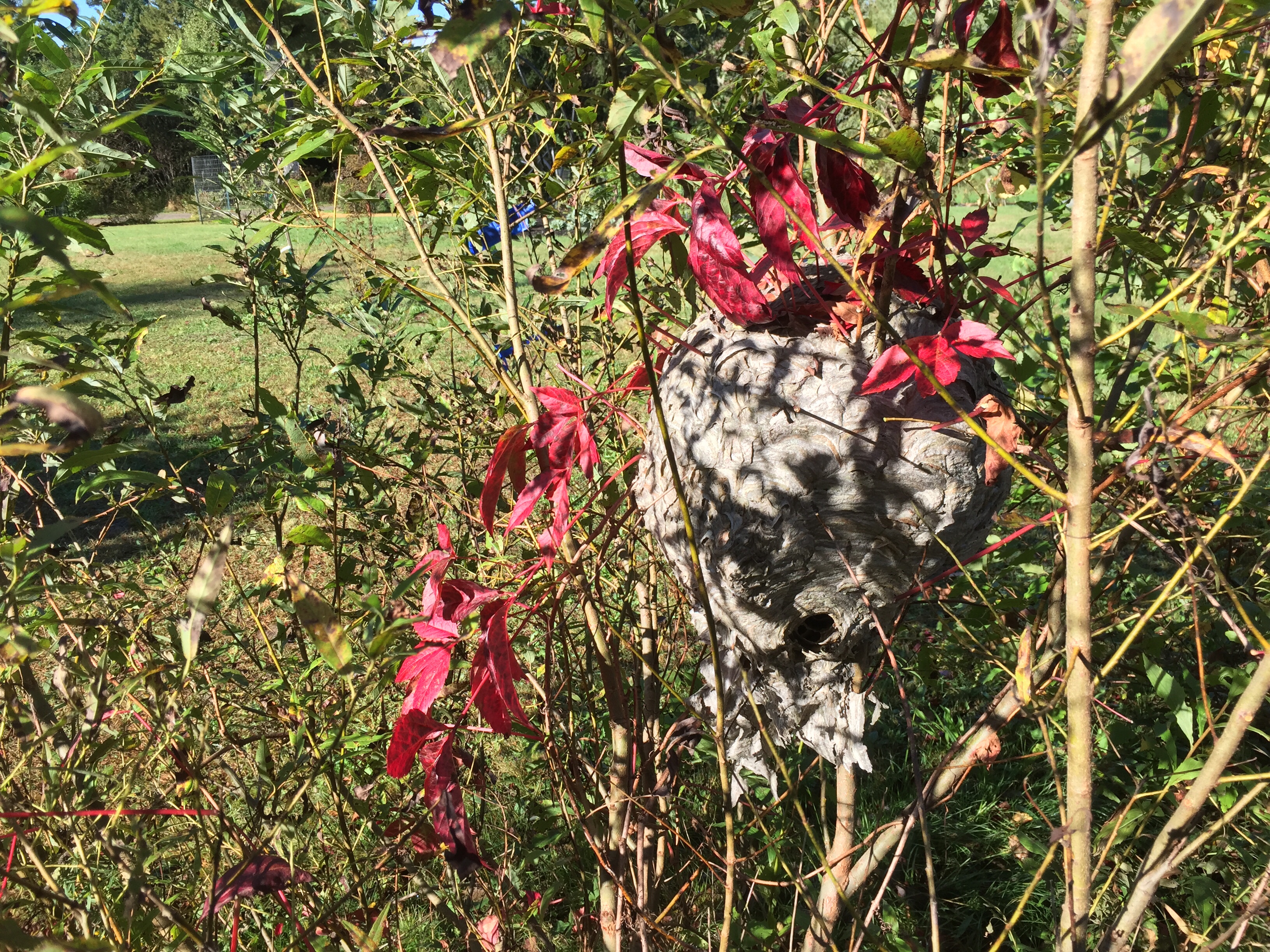
Bottlebrush Buckeye
A young Aesculus parviflora – think I planted this one a year or two ago and it’s finally starting to grow a bit.
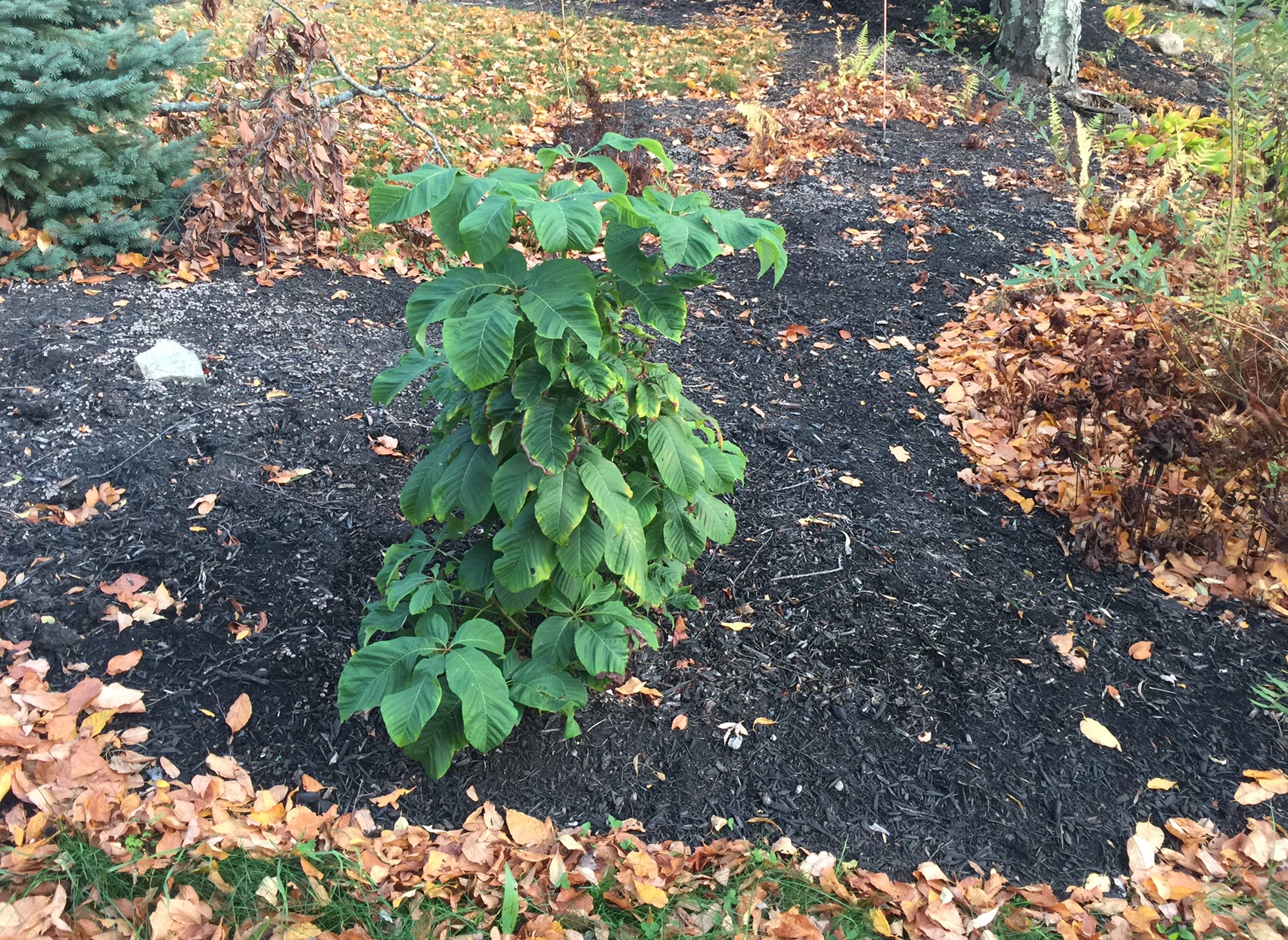
Birch Grove in Autumn
Now that their leaves have dropped, the “Heritage” river birches are showing off their beautiful bark. We planted these in 2012, if I remember correctly. They sit right over where some of the densest knotweed rhizomes were.
In the foreground is viburnum, bayberry, sweetfern and a dogwood. The dogwood and two of its buddies have had their roots pruned in anticipation of being transplanted next spring.
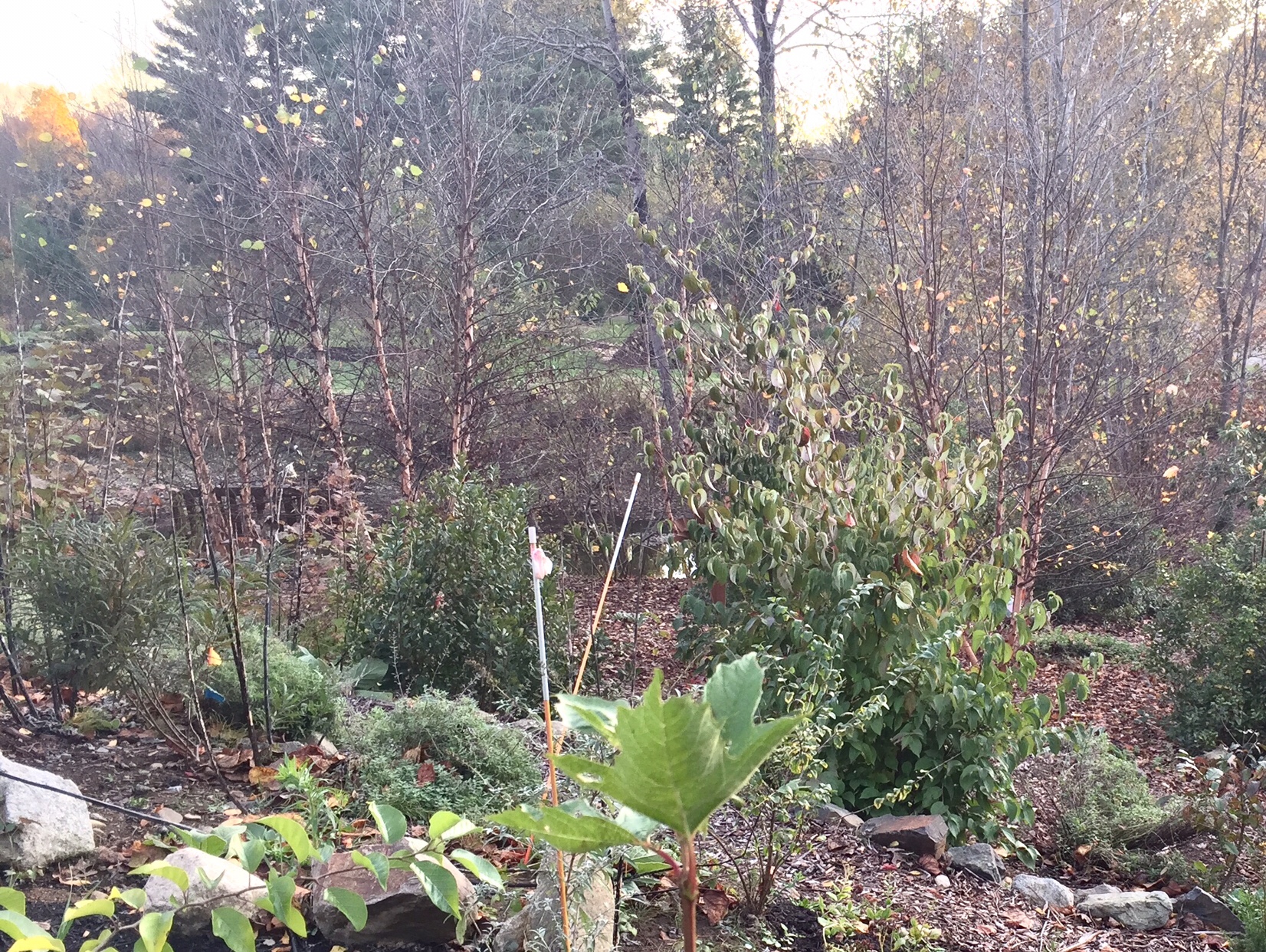
Cedar-Apple Rust
Gymnosporangium juniperi-virginianae again. These are the things that later turn bright orange in the spring rain and cause red spots on apples and crabapples. Though it does not appear to harm the junipers, I cut hundreds of these things out of our Eastern redcedars (Juniperus virginiana), as many as I could reach.
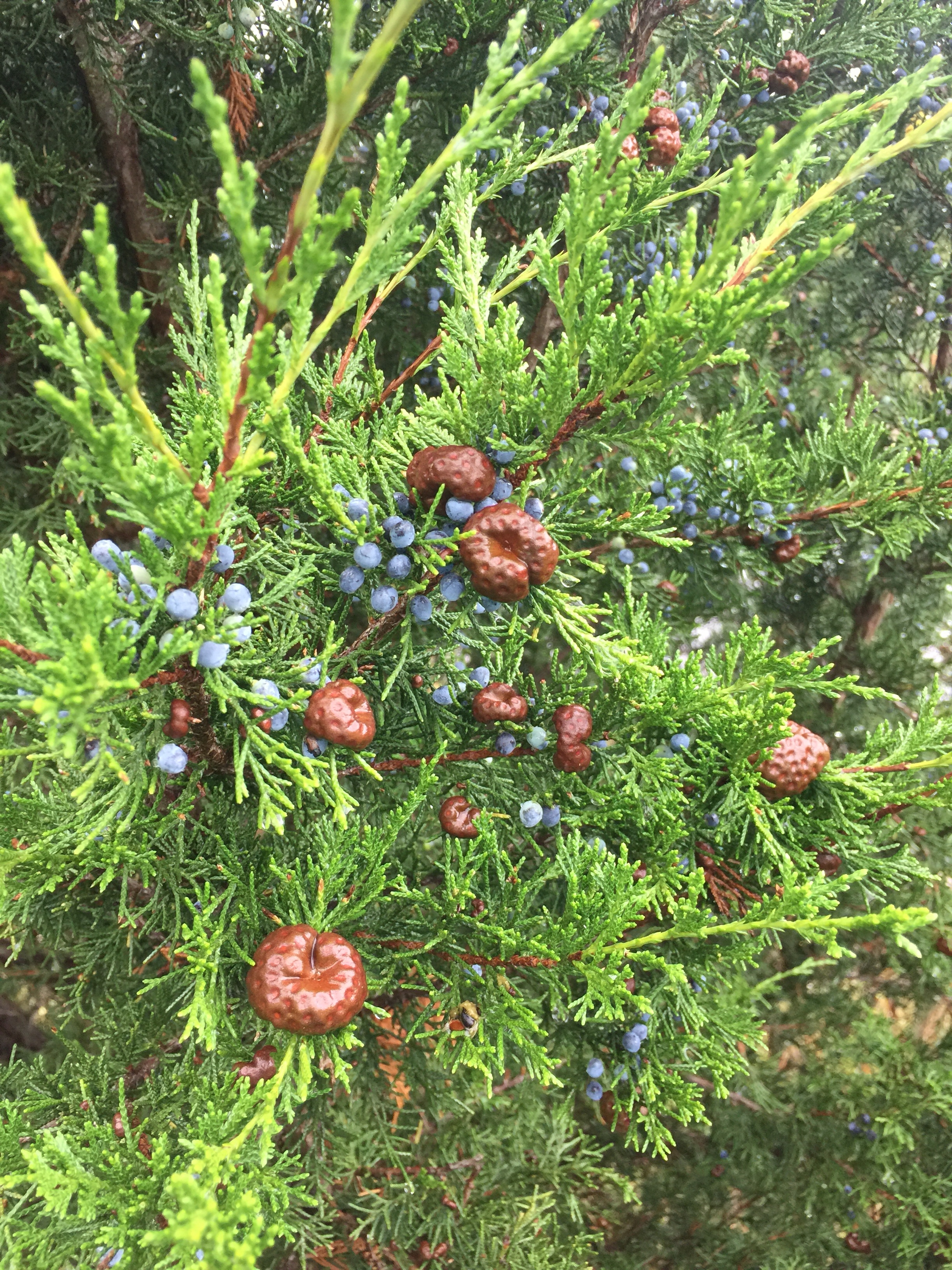
Winterberry?
A branch of a small (about 12′ tall) tree, a volunteer on the north (rocky) side of the pond. We think it may be a winterberry holly.
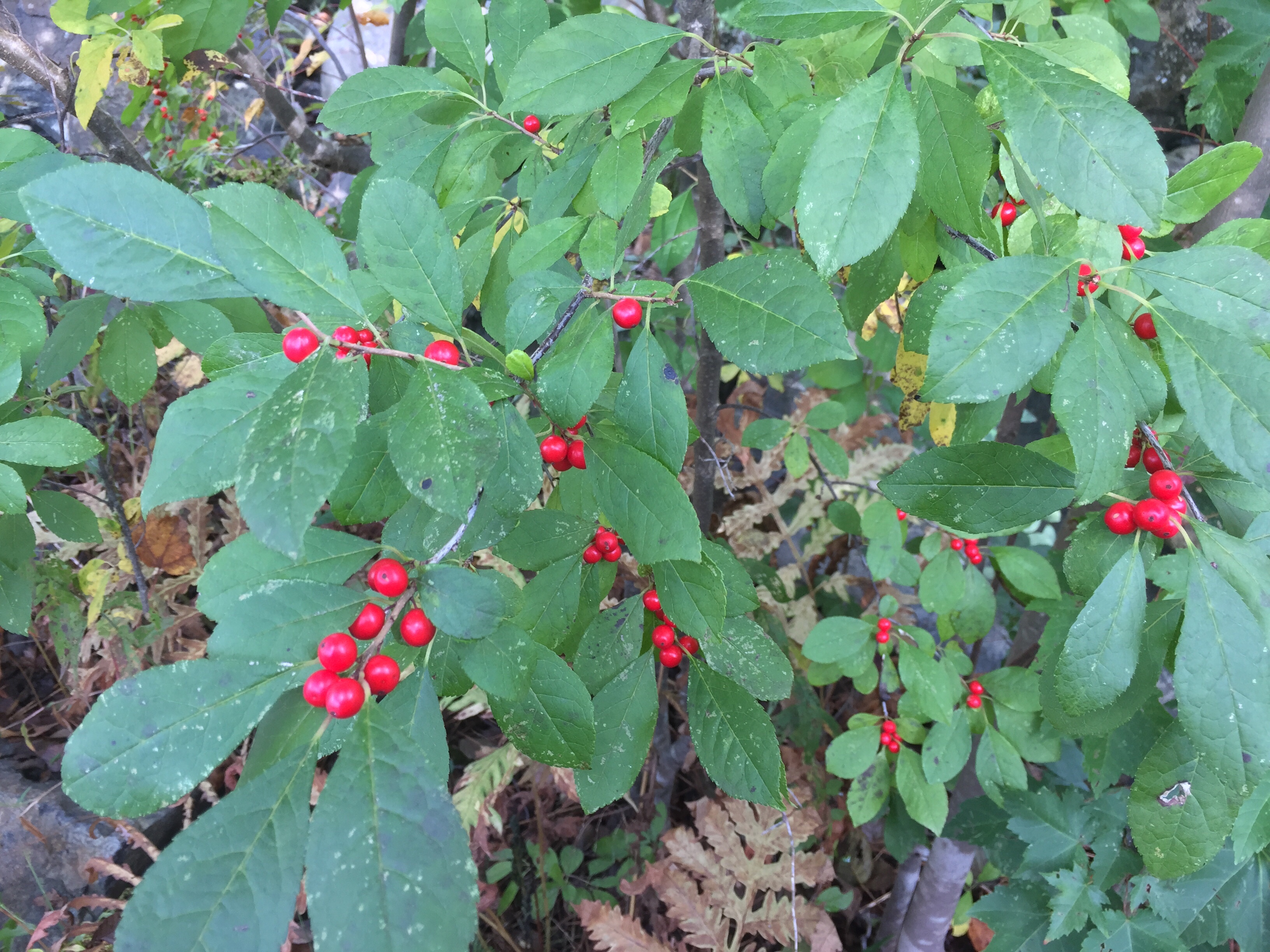
Selective Mowing
This may not look like much, but it’s important. The plants immediately bordering the pond (dogwoods, pussy willows, elm) remain unmowed for the winter. A strip that contained some wildflowers (milkweeds, asters, daisies, goldenrods, etc.) yet also some invasives (mainly field bindweed, or mile-a-minute) benefits from being mowed.
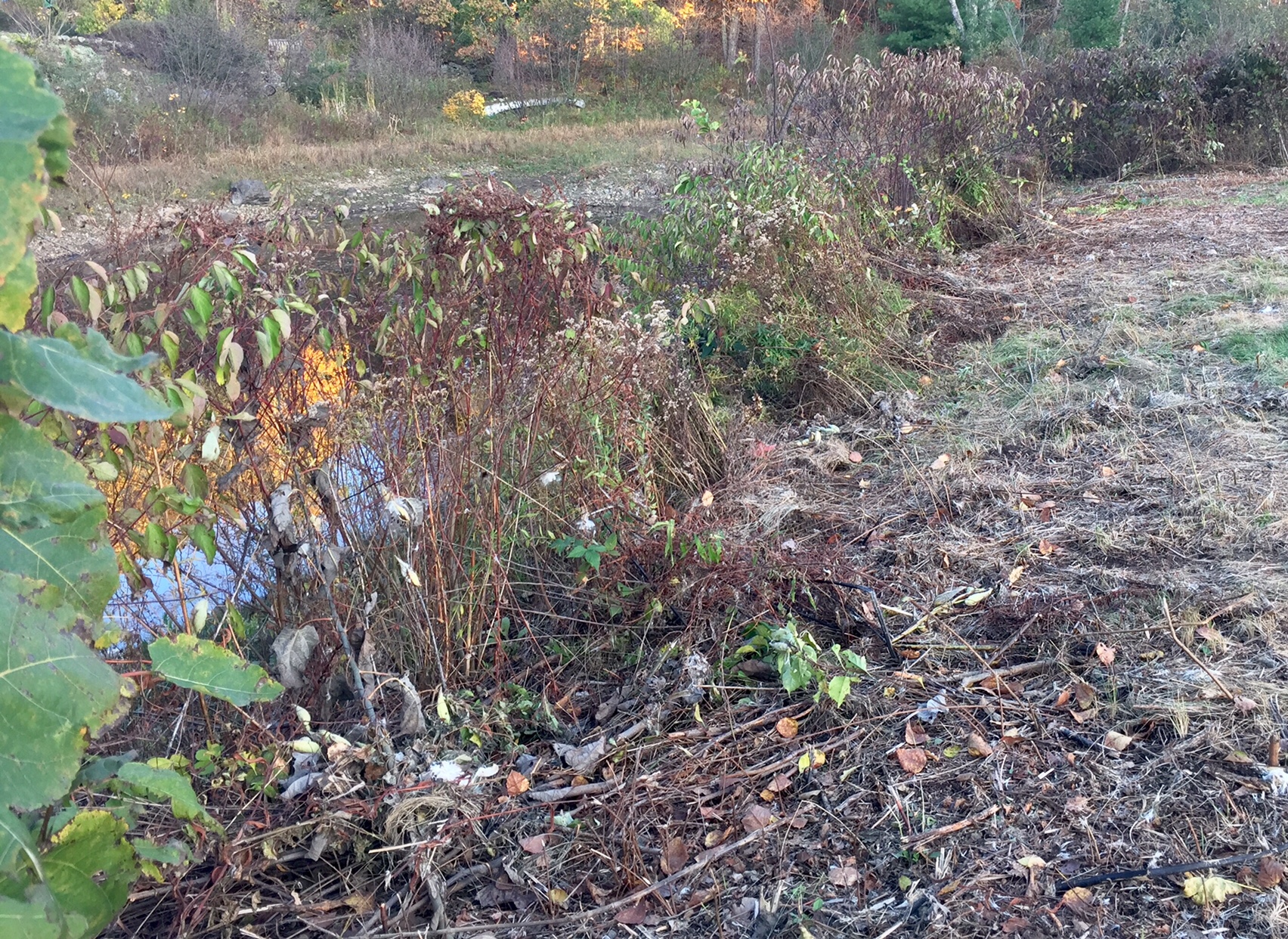
Other Natives Join Milkweeds
Over on the other end of the pond, a bunch of existing dogwood shrubs needed dividing, so we transplanted them here, to back up the milkweeds. In front of the milkweeds are little bluestem, big bluestem, aster and fern divisions. A young Princeton elm anchors the far end of the “river.”
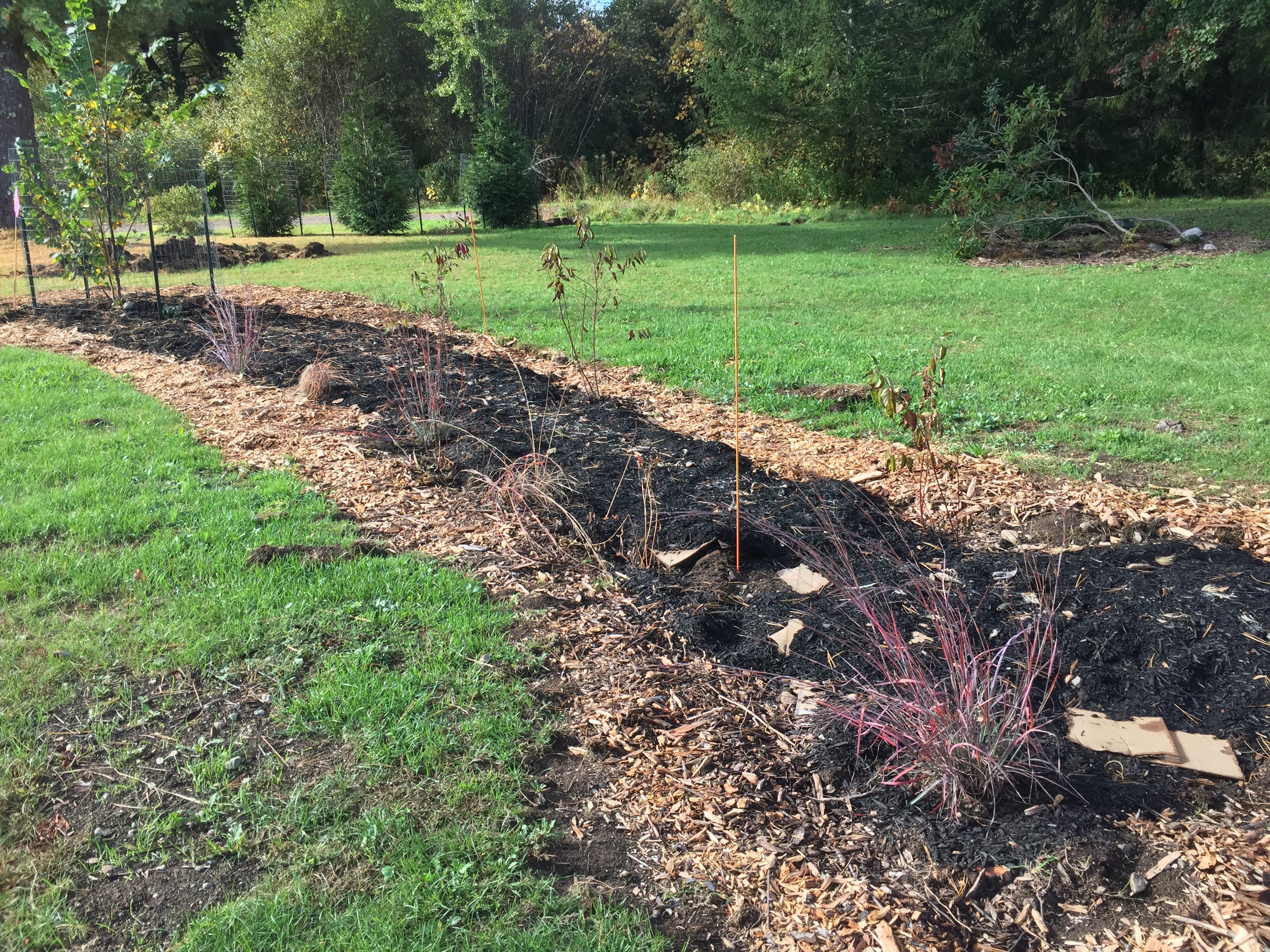
Milkweed Seeds
Seeds collected from Asclepias syriaca (common milkweed) and Asclepias incarnata (swamp milkweed) are almost as beautiful as the plant itself! These were immediately scattered all along the Milkweed River.
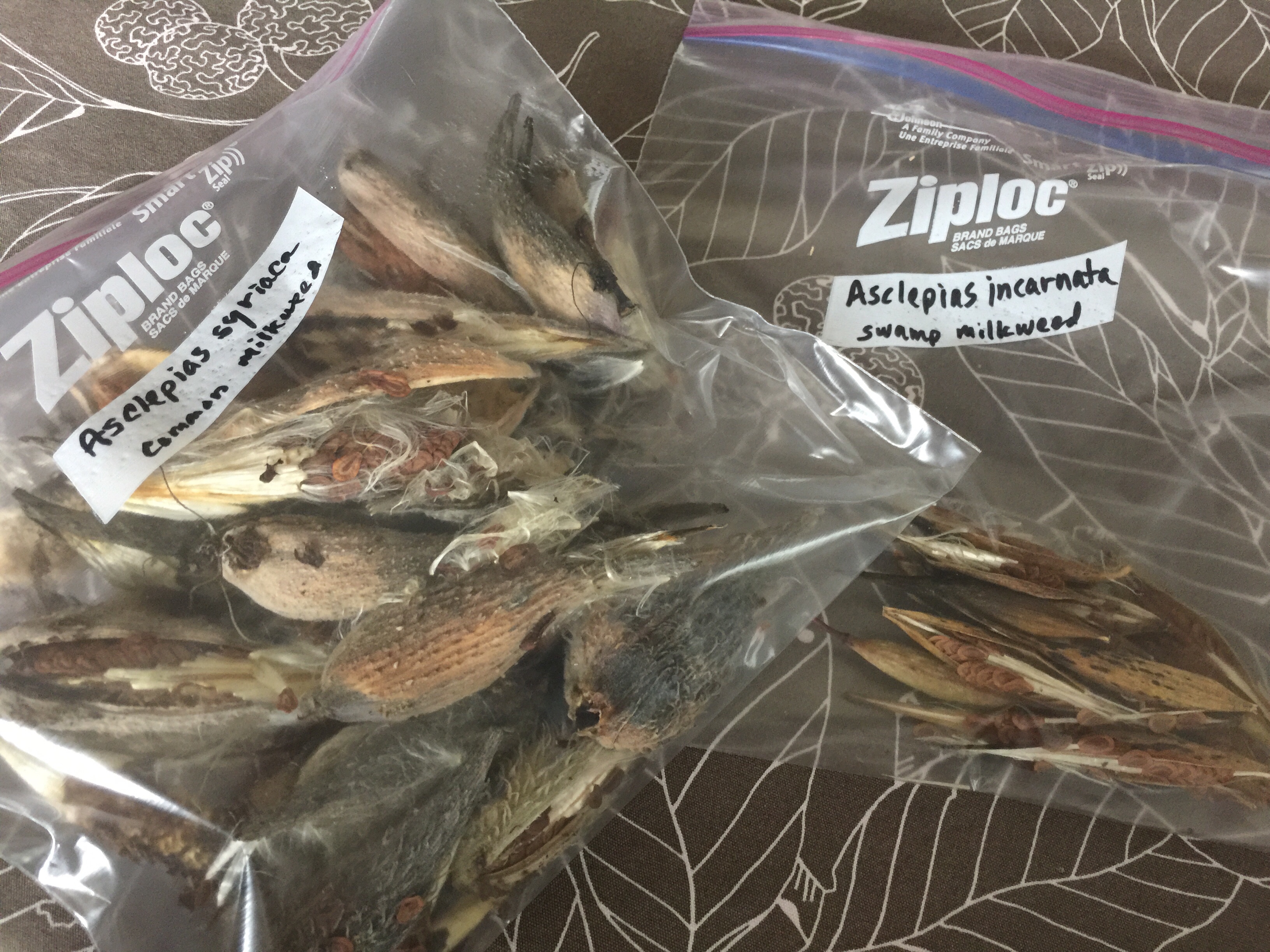
The Milkweed River
The west side of the back acre needed more wildlife-friendly planting. This long swath begins in the nearfield with evergreens to grow up and eventually block the view of the wood chip pile from the house. It then winds all the way across the field to the right.
